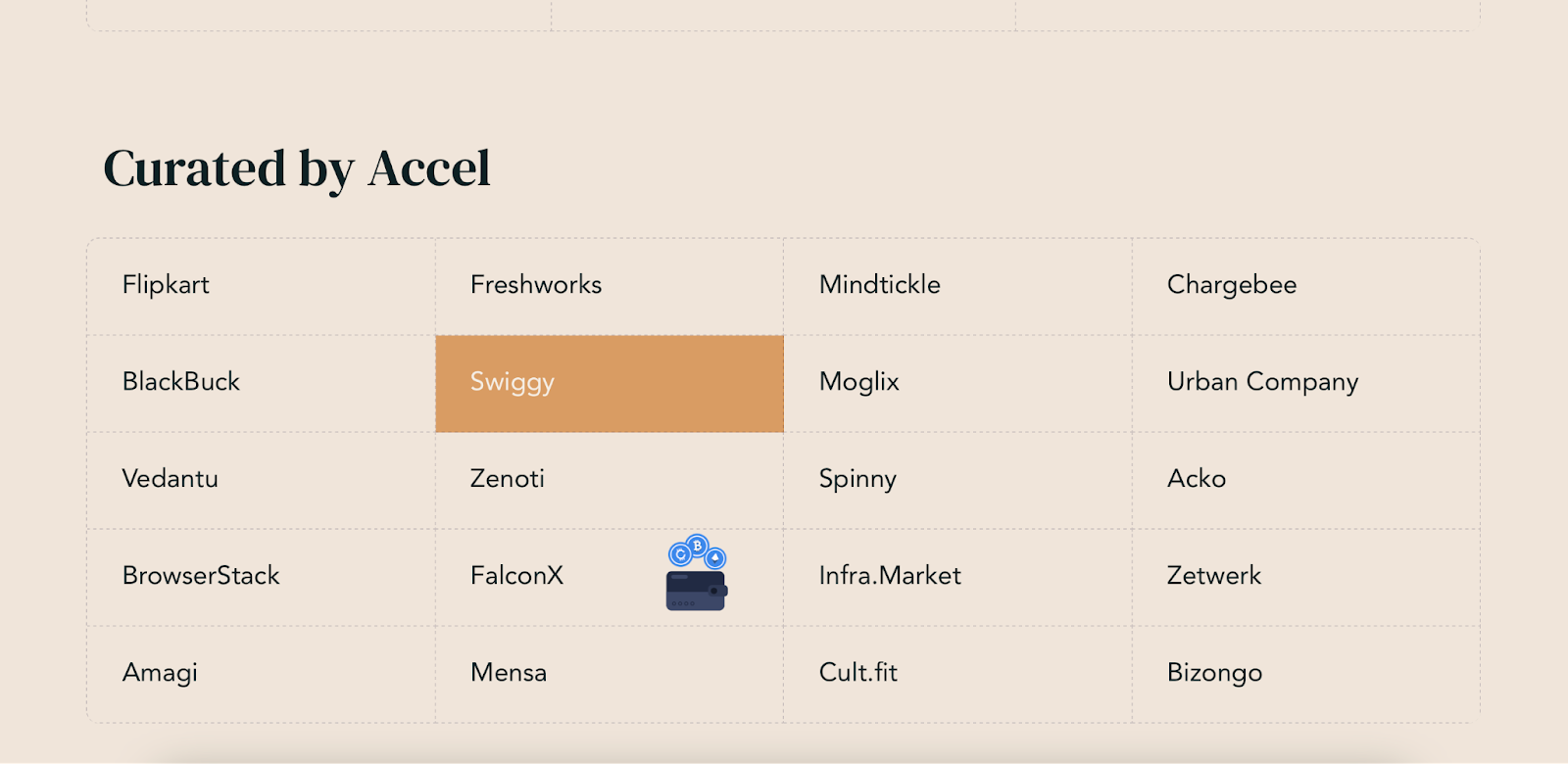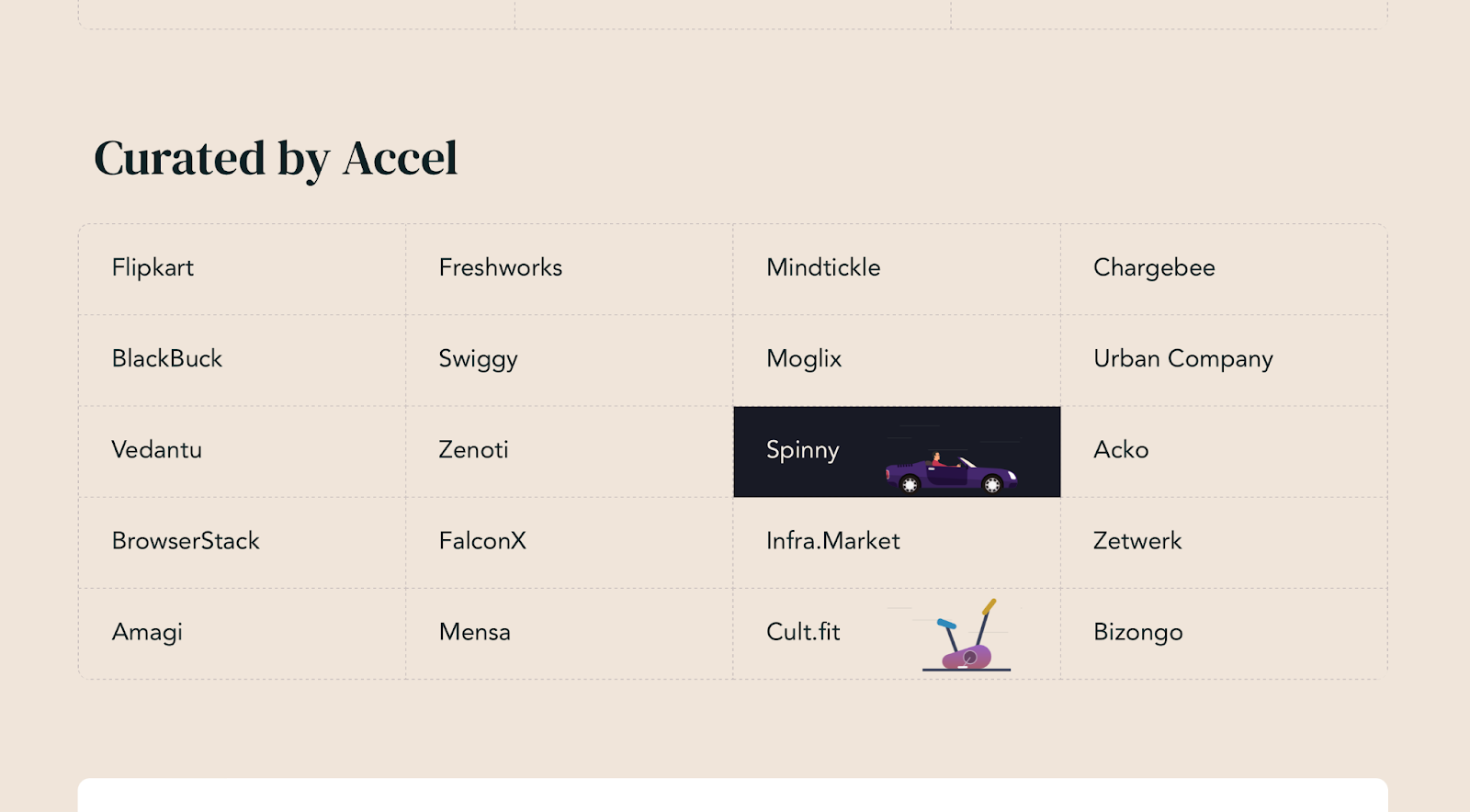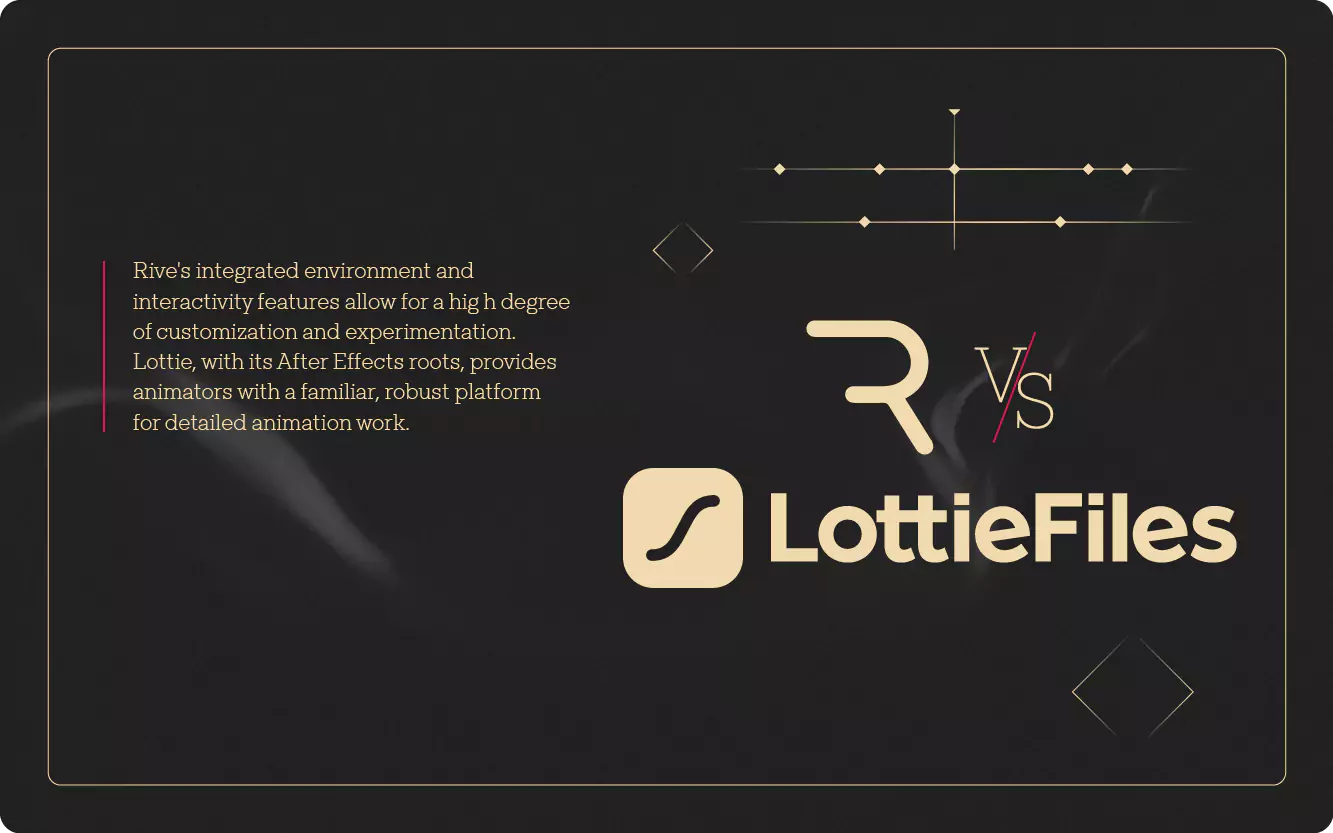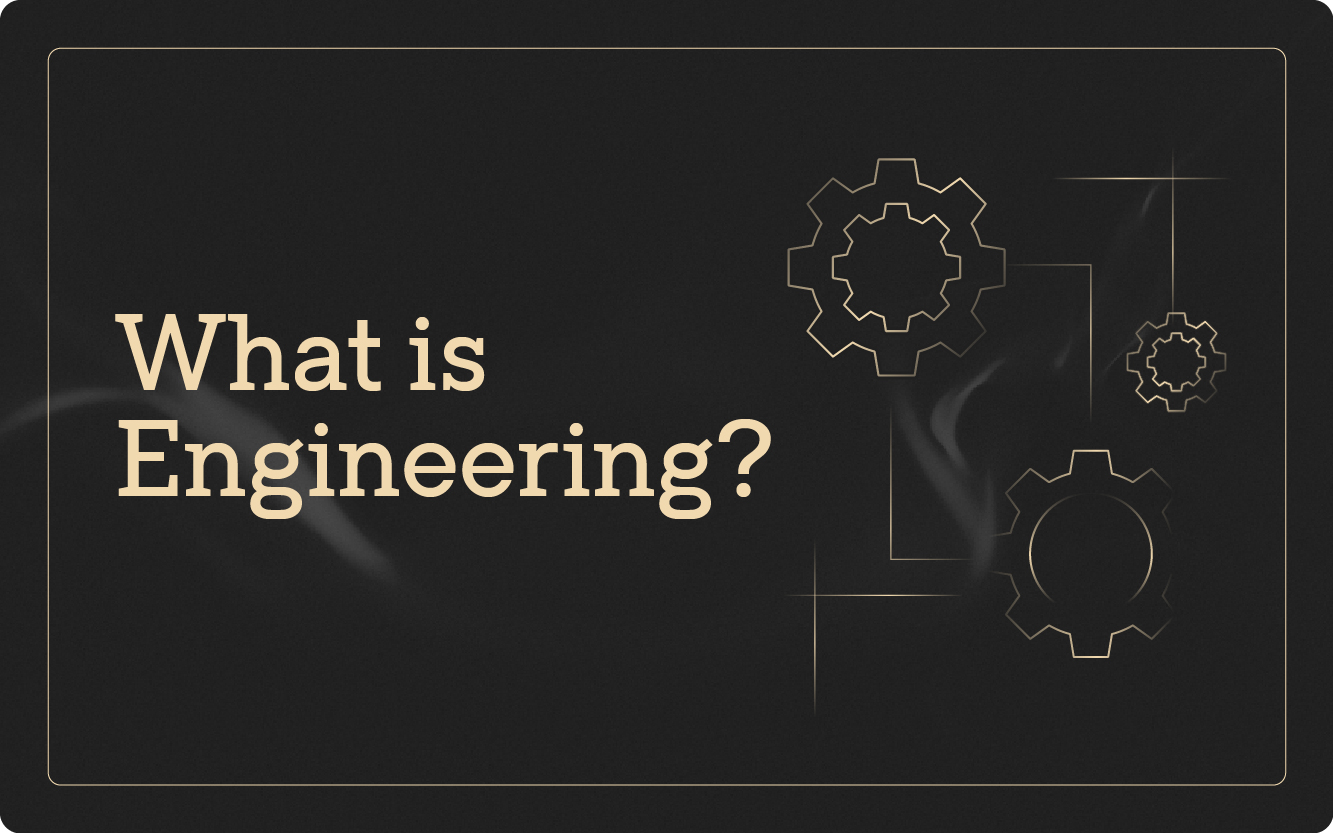Today, we're diving into a topic that has sparked a lot of buzz in the web design community - the great animation debate: Rive vs. Lottie.
Whether you're a seasoned designer or just starting to explore the world of web animations, you've likely encountered these two names.
They're like the superheroes of the animation world, each with their own set of powers and specialties.
But here's the real question: when it comes to elevating your Webflow projects, which one is your go-to ally?
Is it Rive, with its sleek interactivity and efficient performance, or Lottie, known for its straightforward animation focus and wide use in digital storytelling?
It's more than just choosing a tool; it's about picking the right partner to bring your creative visions to life.
So, buckle up as we embark on this exciting journey, comparing, contrasting, and uncovering the strengths and quirks of Rive and Lottie.
Let's find out which tool best suits your web design missions!
Rive vs Lottie in terms of Performance and Size
The Need for Speed
When it comes to web animations, speed isn't just about getting there fast; it's about delivering a smooth, seamless user experience.
Here's where Rive really shines. Designed specifically for real-time applications, Rive's format is streamlined to keep things quick and responsive.
This means animations load faster and run smoother, which is crucial for keeping those ever-important website visitors engaged.
But what about Lottie? Well, Lottie animations are also efficient, but they're a bit like a Swiss Army knife - versatile, but not always the fastest tool in the shed.
Built on JSON, Lottie animations are easy to work with and widely compatible, but they can sometimes lag behind Rive in terms of sheer performance speed, especially in more complex animations.
Keeping It Light
In the digital world, size does matter. Smaller file sizes mean quicker load times, and Rive understands this perfectly.
By focusing only on the essentials and cutting out the fluff, Rive keeps its animations lean and mean.
Smaller file sizes are not just a convenience; they are a necessity for ensuring your website doesn't get bogged down by heavy graphics.
Lottie, on the other hand, has a different approach. Its reliance on JSON makes it a bit heavier, especially when dealing with intricate animations.
While this isn't a deal-breaker, it's something to consider if website performance and load times are top priorities for you.
Comparing Interactivity and User-Engagement
The Interactive Champion
Picture this: animations that don't just move but react – to clicks, swipes, or even external data.
That's Rive's playground. Rive takes interactivity to a whole new level. With its sophisticated Rive Editor, you're not just creating animations; you're crafting experiences.
Imagine graphics that change with user input or evolve based on real-time data. That's the kind of dynamic, immersive interactivity Rive brings to the table.
It's like giving your website a personality that interacts with visitors.
Limited but Potent Interactivity
Lottie, while primarily focused on animations, isn't completely out of the interaction game.
The catch? Its interactivity often requires a bit of coding gymnastics.
Since Lottie animations are born from After Effects, they're superb for storytelling and visual narratives but need some extra coding to make them interactive.
So, while you can have interactive Lottie animations, they demand more technical legwork, especially if you're aiming for complex interactions.
Now you might wonder,
Why does this matter? Well, in the digital age, engagement is king.
The more your website's elements react to users, the longer they stick around, and the better they remember your site.
Rive's built-in interactivity features make it a powerhouse for creating engaging, responsive designs.
Lottie, while a bit more hands-on, can still be part of this interactive journey with a bit of coding.
End-to-End Pipeline Versus Multi-Platform Integration
As we delve deeper, it's time to talk about workflow and integration – essentially, how these tools fit into the grand scheme of your design process.
Rive: The Seamless Workflow Maestro
Rive presents itself as a one-stop-shop for animation creation and integration. What sets it apart is its end-to-end pipeline.
This means everything from designing to animating to deploying is done within the Rive ecosystem.
The beauty of this approach? Consistency. What you design is what you get across all platforms. It's a harmonious workflow, with fewer surprises and iterations.
The Rive Editor, file format, and runtimes are designed to work in unison, ensuring that your animations look and behave as intended, whether on a web page, a mobile app, or a game.
Lottie: The Multi-Tool Approach
Lottie’s approach is like having a versatile toolkit. It’s built to work with a variety of design tools – think Illustrator, Figma, Sketch – and then brought to life with After Effects.
This multi-platform pipeline has its charms, offering flexibility and the comfort of using familiar tools. But it's not without its challenges.
The transition from design to animation can sometimes lead to inconsistencies, and iterating across different tools can be a juggle.
It's a workflow that might appeal to those who love mixing and matching tools but can be cumbersome for those seeking streamlined processes.
Workflow in Practice
Why does the workflow matter? Think about it as the foundation of your animation project.
A streamlined workflow like Rive's can save time and reduce headaches, especially when making changes or updates.
Lottie’s flexibility is fantastic, but it requires a bit more coordination and effort to maintain consistency.
The choice depends on what fits your working style and project needs best.
Let’s Compare Ease of Use, Iteration, and Collaboration
The Intuitive and Iterative Powerhouse, Rive
Rive takes the lead in offering an environment that is not just user-friendly, but also conducive to quick iterations.
The integrated nature of Rive means you can design, animate, and tweak all in one place. This streamlined process is a huge plus for designers and developers alike, making it easier to experiment and iterate on the fly.
Got a change to make? No problem. Rive allows for quick adjustments without the need to jump between different software or tools.
Moreover, Rive's collaborative features are a boon for teams. Multiple people can work on the same project, viewing changes in real-time, which is a massive advantage in today's collaborative work culture.
This feature alone can be a game-changer for teams looking to streamline their workflow.
A Bit More Complex, Yet Versatile, Lottie
Lottie, while powerful, tends to have a steeper learning curve, especially for those not familiar with After Effects.
The process of creating animations in After Effects and then exporting them to Lottie can be intricate.
This workflow might be second nature for seasoned animators, but for others, it could present a challenge.
Iteration with Lottie often means going back to the drawing board – quite literally.
Changes in design or animation might require revisiting the original design tool and After Effects, then re-exporting to Lottie.
This multi-step process can be time-consuming, although it offers flexibility and control over the final product.
Specialized Applications and Platform Support
Rive stands out when it comes to building interactive graphics for a diverse range of applications.
Its strength lies in creating dynamic, responsive elements ideal for products, apps, websites, and even games.
This versatility is a testament to Rive's design philosophy, which focuses on interactivity and real-time engagement.
Whether you're designing an interactive tutorial for an educational app or an animated character for a mobile game, Rive's capabilities align perfectly with such interactive needs.
The Animator's Choice for Storytelling, Lottie may have limitations in interactive features, it excels in the realm of digital storytelling and visual narratives.
Its compatibility with After Effects makes it a prime choice for animators who specialize in creating compelling, narrative-driven content.
Lottie animations are ideal for websites that require intricate, story-like sequences or explanatory animations, adding depth and emotion to the user experience.
Platform Support
Rive's support spans across a wide array of platforms, including web, iOS, macOS, Android, Windows, Flutter, React, React Native, C++, and various game engines.
This extensive support ensures that Rive animations can be integrated into almost any project, regardless of the platform.
Lottie, similarly, boasts broad compatibility. Its JSON-based animations can be implemented across various web and mobile platforms, making it a flexible option for projects that span multiple devices and operating systems.
Deciphering creative Limitations and Strengths
Rive excels in the realm of vector graphics.
Its powerful editor and animation capabilities allow designers to create intricate, scalable vector animations with ease.
This makes Rive an ideal tool for projects that require crisp, clean lines and shapes that scale flawlessly across different screen sizes.
Designers who frequently work with vector objects will find Rive's toolset particularly conducive to their creative process.
Where Rive leads in vector animation, Lottie finds its strength in handling image sequence animations.
This capability is a boon for projects that require more bitmap or raster-based graphics – think detailed illustrations or photographic elements.
Lottie's seamless integration with After Effects ensures that these types of animations maintain their visual fidelity, making it a preferred choice for projects that rely heavily on image sequences.
Creative Freedom
When it comes to creative freedom, both Rive and Lottie offer unique advantages.
Rive's integrated environment and interactivity features allow for a high degree of customization and experimentation, particularly useful for designers who want to push the boundaries of interactive design.
Lottie, with its After Effects roots, provides animators with a familiar, robust platform for detailed animation work.
This is particularly advantageous for projects that require complex, narrative-driven animations where detail and storytelling are key.
Choosing Based on Creative Needs
The decision between Rive and Lottie can often come down to the specific creative needs of your project.
For designers focusing on interactive, scalable vector animations, Rive offers the tools and capabilities to bring those ideas to life.
Conversely, if your project demands detailed image sequences and narrative animation, Lottie's strengths align well with such requirements.
Herman Torrisi Joins Rive
In an intriguing twist within the animation industry, Hernan Torrisi, the founder of Lottie, has joined forces with the Rive team.
This move is more than a mere career transition; it represents a potential shift in the landscape of web animation tools.
The collaboration of Torrisi's expertise in After Effects-driven animation from his time with Lottie and Rive's focus on interactive vector graphics could lead to an exciting fusion of animation philosophies.
This development might pave the way for innovative features in Rive, potentially incorporating the narrative strength of Lottie with Rive's interactivity.
For designers and developers, this signifies a promising future, where they might have access to more versatile tools, blending high-quality animations with sophisticated interactive capabilities.
As the animation tool industry evolves, Torrisi's move to Rive is a significant milestone to watch, potentially heralding a new era of unified and comprehensive animation tools and strengthening Rive’s hold in the market.
Rive or Lottie, What do we prefer
As a no-code agency, both Rive and lottie have been very beneficial to our projects, hence we wanted to light on some of our work where we took advantage of either of these tools.
Seed to Scale built on Rive

We added zest on SeedtoScale’s website, through these super cool hover animations built on Rive.

People Who Design built on Lottie (Need Insights from Team EPYC)
Ending Note
In our exploration of Rive vs Lottie, it's evident that both tools offer unique advantages. Rive stands out with its interactive vector animations and streamlined workflow, perfect for dynamic web experiences.
Lottie excels in delivering detailed, narrative-driven animations, especially from After Effects, making it ideal for storytelling.
The choice between Rive and Lottie boils down to your project's specific needs and the type of animations you aim to create.
Whether you lean towards Rive's interactivity or Lottie's narrative flair, each tool opens up a world of creative possibilities for your Webflow projects.
Curious to see how these tools can transform your Webflow project?
Share your experiences with us, or dive in and experiment with both Rive and Lottie.
Your next project might just be the perfect canvas to showcase their unique strengths.
And if you feel the need to be assisted, we’ll be happy to help.
Happy animating!




.webp)
%20(1)%201.webp)
